#horse digestive system
Explore tagged Tumblr posts
Text
Training Horses - Equitopia Center
What is the best training method for horses?
The "best" training method for horses can vary depending on factors such as the individual horse's temperament, the goals of training, the discipline or activity the horse will be involved in, and the preferences and experience of the trainer. There isn't a one-size-fits-all approach to horse training, as different methods may work better for different horses and situations.

Some common horse training methods include:
Natural Horsemanship: Focuses on understanding horse behavior and communication, building trust and respect between horse and handler, and using gentle, non-coercive methods to train the horse. Techniques may include groundwork exercises, desensitization, and establishing clear boundaries and leadership.
Classical Dressage: Emphasizes developing the horse's balance, suppleness, and responsiveness to subtle cues from the rider. Training progresses through a series of systematic exercises and movements, focusing on building the horse's physical and mental capabilities over time.
Operant Conditioning: Uses principles of reinforcement (rewarding desired behaviors) and punishment (discouraging undesired behaviors) to train horses. Positive reinforcement methods, such as clicker training, focus on rewarding the horse for correct responses, while negative reinforcement methods aim to remove or lessen pressure or discomfort as the horse performs the desired behavior.
Western Training Methods: Often focus on developing a responsive and well-trained horse for activities such as ranch work, trail riding, or western riding disciplines like reining and cutting. Techniques may include groundwork, pattern work, and refining cues for maneuvers such as stops, turns, and transitions.
Ultimately, the best training method for a particular horse depends on factors such as the horse's personality, physical abilities, and the goals and preferences of the owner or trainer. It's essential to approach training with patience, consistency, and respect for the horse's well-being, regardless of the specific method used. Additionally, seeking guidance from experienced trainers or professionals can help ensure effective and humane training practices.
#rider equestrian#horse biomechanics#equine classes online#how to thigh ride#discuss horse#horse digestive system#horse muscle anatomy#groundwork for horses#how to be a horse rider
0 notes
Text
im losing my mind i saw one too many photos with false information about "humans are herbivores" while looking up teeth (bc i wanted to quickly check something for a drawing)
people are in fact allowed to just.... not eat meat without lying? i really dont get why anyone would?
#Im going to kill im going to kill im going to kill im going to kill#im suffering in 'why tf did someone lie and say that a rabbits digestive system is the same as a humans'#humans are well known 4 having small appendixes? how did someone think that was a good idea?#also horses do not have 'rudimentary and blunt canines'#those do not exist#negative#i need to sleep lol#humans do not need fiber to activate peristalsis. that would actually kill people if that was required.#(peristalsis is how food and Water moves through the digestive system (aka SWALLOWING REQUIRES PERISTALSIS)#i would sure hope that water isnt full of fiber (humans cant actually digest fiber so this would be the dumbest adaptation ever)
2 notes
·
View notes
Text
Causes great back pain, I'd presume. Human spines are bad enough due to being reoriented for the vertical. Having a 90° turn and another whole length of spine is bound to cause even more issues.
Guys do centaurs have to eat both horse food and human food?
#I'd think there would have to be two digestive systems#Not convinced that grass and some grains would be enough to power a human brain (~25% of our energy budget IIRC)#Maybe it could work if the horse system was swapped out for a much larger human-style digestive system?#And they just ate a lot of human food?#But while it would be much bigger than a normal human system#It wouldn't be as big as a horse's#Don't need room for hindgut fermentation#So you'd have this extra space…#I think you'd end up with the horse's body looking more like racing dog#Also while having horse lungs would be necessary#I think the human wind pipe and mouth/nose would just not be big enough#Maybe for standing around or walking slowly#But not for any kind of exercise#And especially not running hard#Dunno how you fix that#Also#Gestation and birth would be insane#That 90 degree bend is just not going to work#Dunno how to fix that either#The breathing thing maybe you could fix or at least help by giving them avian-style unidirectional breathing#Also the developmental mismatch between human and horse at birth would be an issue#Colt body ready to stand up and run in a few hours#Vs human infant body that can't do shit for months#Maybe just start with a horse head and it magically morphs and grows out a more developed human child torso and head after a while?#IDK#It's a mess
225K notes
·
View notes
Text
I am stressed about a horse please distract me
#horses are stupid animals that shouldn't exist#or at least they should have functioning digestive systems#god forbid evolution creates a functioning animal
0 notes
Text
I know I put this on the tags of that "horses will eat meat and eggs" post but like if that's all it takes for people to get freaked out and think horses are deranged then they should also be aware that almost all other herbivores do the exact same thing. It's actually seems to be way less common for herbivores to eat 100% only plants than it is for them to eat meat occasionally (koalas are one of the suspected few strict herbivores bc their diet and digestive system is so specialized). They don't go out searching/hunting for it like carnivores and omnivores, but if they stumble across some carrion or some eggs (or some particularly easy live meat), that's fair game, even moreso if other food is scarce.
Like,,,,Deer will eat dead fish and rabbits, and have been recorded eating dead deer also. They've also been recorded eating live hatchlings from bird nests. Rabbits will scavenge birds a lot, and also do scavenging cannibalism. Snowshoe hares have been recorded scavenging a lynx, which is ironically their main predator when alive. Elephants will eat fish. Cows will eat live birds just right of the ground, along with eggs they may find.
Horses aren't deranged bc they'll eat meat, they're deranged bc theyre like if you put the ghost of a psychically-sensitive victorian child into the body of a 1500 pound mammal.
34K notes
·
View notes
Text
The 12 houses explained: short word format
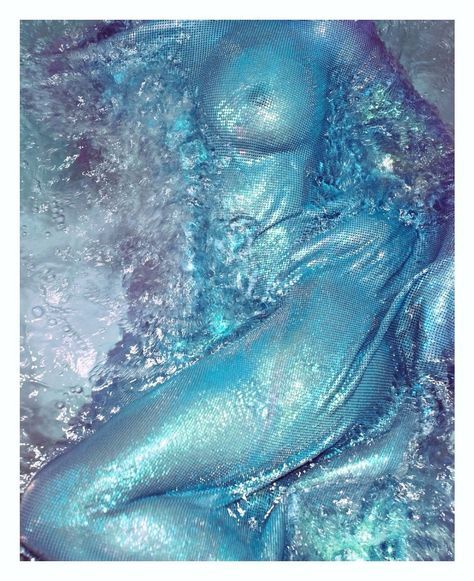

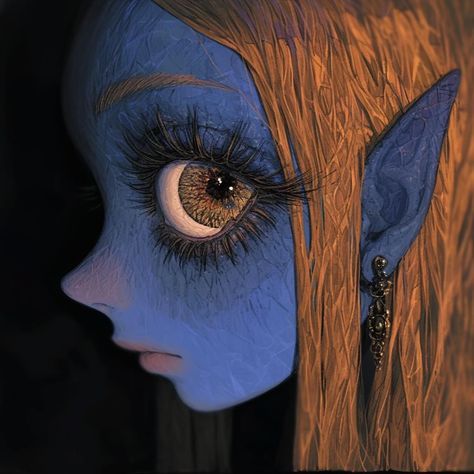
1st: Aries, Mars, Yang, Dragon, Bee, Face, Eyes, Eyebrows, Voice, Accent, First Glance, Passion, Drive, Self Esteem, 3rd Eye, Intuition, Hard on yourself, Mutable, Patience, Leader, Stoic, Muscles, Neck/Head tension, Animals, Intensity, Head scarf, Tender headed, Attracting energy vampires, Hard headed, Red, Purple, Sexual energy, Humor, Introvert/extrovert, Fear of child baring because loss of freedom, Judgement, Lymph nodes, Guitar, Fast talker, Sharp talker, Forward thinking, Warrior, Personality, Spine...
2nd: Taurus, Venus, Yin, Panda, Neck/Throat, Throat chakra, Mouth, Thyroid, Heart, Pink, Blue, Fluid, Security, Resources, Musician, Silent, Introvert, Nose, Scent, Taste, Parent, Singing, Arms, Dancing, Food, Breeze, Partnership, Sharing, Values, Luxury, Pleasure, Easy going, Soft spoken, Naivety, Split decisions, Indecisive, Moon, Father, Sturdy, Poker face, Children, Trustworthy, Grit, Victory, Horses, Trials...
3rd: Gemini, Mercury, Yin/Yang, Jack Rabbit, Hands, Feet, Speech, Tongue, Lungs, Fast pace, Exercise, excitement, Bounce back, Joy, Vigor, Youth, Fidget, Anxiety, Habits, Expressive, Musician, Storyteller, School, Journalist, Moral system, Networking, Group, Siblings, Questioning, Stocks/trading, Choices, Dedication, Picky, Options, Dare Devil, Flirt, Long lasting, Hopes, Trees/Forest, Art, Comedian, Chances, Materials, Time, Loyal, Boundaries, ...
4th: Cancer, Moon, Yin, Owl, Family, Mother, Compassion, Creation, Birth, Life, Regret, Sleep, Nipple, Breast, Anus, Stomach, Womb, Bellybutton, Heart, Sacral, Blue, White, Yellow, Ocean, Cold, Night, Cycle, Fly on the wall, Unspoken secrets, Pores, Suicide, Whispers, Distracted, Outsider, Alchemy, Caregiver, Chef, Guidance, Critical, Teeth, Passage/Gateway, Humming, Drums, Weight on your back, Pressures, Gratefulness, Gratitude, Obedience, Horse, Animals, Words that cut...
5th: Leo, Sun, Yang, Lion, Spine, Heart, Pets, Fun, Youthful, Children, Love affairs, Expression, Dance, Gymnastics, Loud, Bright colors, Short trips, Friends, Aunts/Uncles, Get togethers, Cars, Innovative, Actor, Protection, Magician, Gardening, Gossip, Alchemy, Adulthood, Relaxing, Bonding, Self destruction, Slick words, Hard work, Spotlight, Sharing, Rebuilding, Clothing, Renewed vision, Drawing board, Companionship, Grounding...
6th: Virgo, Mercury, Yin, Ant, Crane, Praying Mantis, Work environment, Routine, Structure, Time, Patience, Health issues, Hygiene, Nervous system, digestive system, Pancreas, Gallbladder, Notebooks, Writing, Movies, Home, Relaxing, Forgiving, Generous, Social Life, Bonding, Practice, Foresight, Letting go, Stable, Helpful, Tense, Pressure, Negative thoughts, Reminisce, Addiction, Sorrow, Indecision, Indigestion, Saving Finances, Strong will, Codependency, Maturing, Realizing, Criticism, Self Honoring...
7th: Libra, Venus, Yin, Dragon Fly, Peacock, Marraige, Partnership, Contracts, Joint endeavors, Kidneys, Bladder, Blood, Caring what others think, Voice, Accent, Culture, Rebuilding, Learning new ways to do, Home decor, Learning gratitude, Giving, Reseveing, Welcome home, Comfort, Jot, Warmth, Spring, Flowers, New thought processes, Building Legacy, Defending yourself, Possessions, Slower living, Connecting to nature, Center of attention...
8th: Scorpio, Pluto, Mars, Yin/Yang, Vulture, Jaguar, Phoenix Death/Rebirth, Fears, Dark, Dreams, Escaping, Running, Hoarding, Lack, Homelessness, Strength, Stamina, Restart, Hard work paying off, Legacy, Against all odds, Elimination system, Pelvis, All the holes in the body, Burgundy, Purple, Black, Sex organs, Releasing worries, Manipulation, Smothering, Misunderstood, Coffee, Over giving, Partnership, Friendship, Sensuality, Secretion, Body odor, Roses, Fruit trees, Chapel, Railroad, Balancing, Power, Unseen forces, Intimidation, Relaxation...
9th: Sagittarius,Jupiter, Yang, Donkey, Whale, Shark, Liver, Legs, Posture, Religion, Long distance, Foreign travel, New ideas, Creative thoughts, Energy, Witty, Nomad, Idealistic, Larger than life, Focused on success, Friendship, Gatherings, Social Life, Relaxing, Luxury, Boundaries, Tired, Mental Illness, Restrictions, Insecurities, Grandparents, Quiet time, Relationships, Sharing, Attention, Harmony, Rebirth, Hard work, Getting over, Time, Late night thoughts, Male role model, Weight on your back, Responsibilities, Greedy, Guarded, Proud, Protection, Unique, Lavender...
10th: Capricorn, Saturn, Yang, Sheep, Alligator Honey Badger, Cactus, Sterile, Marble, White, Grey, Cold, Winter, Snow, Reputation, Social status, Farming, Popularity, Bones, Skin, Nails, Hair, Sharp, Leather, Goat, Structure, Skin conditions, Over explaining, Hard on others/yourself, Violin, Holding onto the past, Hard choices, Seeing others happen, Collecting, Finding purpose, Unique interest, Creative ways to make money, Standing up for yourself, Tunnel vision, Sharing, Networking, Group efforts, Working on love...
11th: Aquarius, Uranus, Yin/Yang, Moose, Mongoose, Snake, Friends, Parties, Organizations, Goals, Hopes, School, Science, mutable, unique style, Different friend groups, Water, Lakes, Rivers, Driving, Circulatory System, Pituitary glands, Changing course, Fear of change, Social media, Learning to stand alone, Trusting intuition, Defending loved ones, nonchalant, Increasing expectations, Std, Dead tree, Sticking it out, Elders, Community, Taking a stand, Protest, Elections, Politics, Numbers, Releasing restrictions...
12th: Pisces, Neptune, Yin, Fish, Birds, Friends, More to go around, Letting go, Releasing Past, Decor, Eye for style, Luxury, Opinionated, Energy field, Subconscious, Mountains, Fog, Spa, Skincare, Hygiene, Safety, Frienemies, Luck, Protection, Unprovided jealously, Foreign, Secret, Being watched, Self expression, Confidence, Talents, Anxiety, Depression, Breath, Dreams, Sleeping, Ufc/boxing, Always wanting more, Magician, Plants, Sunshine, Exotic, Target, Maturity, Completion...

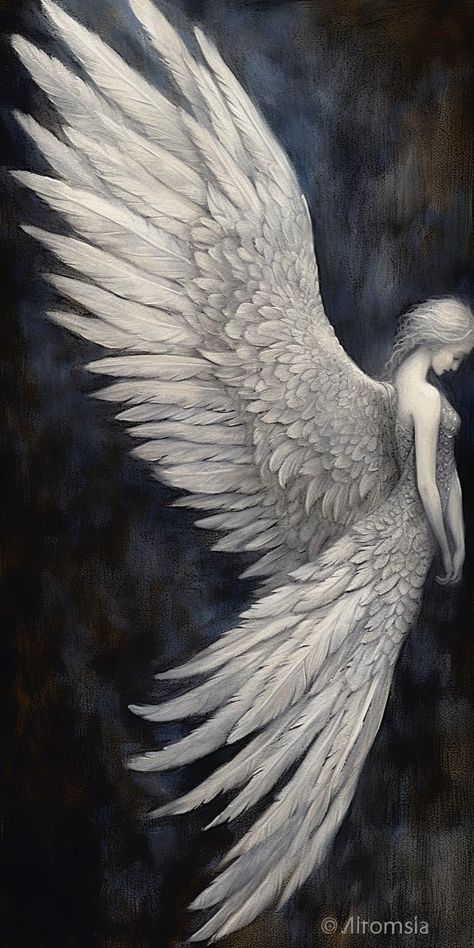

#astrology#astrology101#astrologyzone#astrologychart#8th house#astrologyfacts#astro notes#12th house#pluto astrology#pluto aspects#pisces#capricorn#sagittarius#neptune#venus astrology#astro community#astro blog#astronotes#astrology placements#astro observations#astronomy#aries#virgo#astrology readings#astrology observations
1K notes
·
View notes
Text
What the fuck is centaurs internal anatomy
#why does it have 2 chests#why does it have a belly button but when you look at pictures for the internal anatomy it has the digestive system in the horse part#why is the human part drawn with a belly button when it is just full of lung#i thought they were cool at first but then I started thinking about them and now I just hate them
0 notes
Text
The Memory Keeper
Chapter 1 : List.
Pairing : Noa x human reader
Warning : A bit of mourning. Otherwise, all clear for this one!
Summarize (please I'm so bad at writing these!): A woman, allowed to live as long as the virus keeps running through her body, living on autopilot for 260 years, is going to see her life takes a new turn, finding hope in something that might come to put an end to her wandering.
Words : 3.2k
A/N : It has been a long time since I've written something and it feels pretty good to get back at it with this story! I hope you'll like it and do not hesitate to share your thoughts or like/reblog, it's always appreciated! As English isn't my native language, I'm sorry if you find mistakes or weird wording in there, let me know if you find some and I'll be glad to correct them!
Enjoy your reading 😊
The Memory Keeper masterlist.
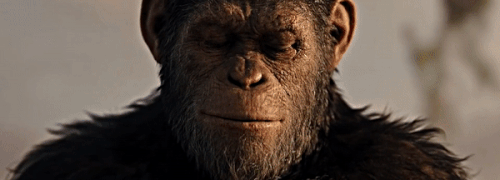
It wasn't going to be a difficult day. The list was ready, the tasks the same as the day before and the day after. You had to go to the river: catch a fish, fill the flasks with fresh water, bathe… You had to get on your horse and on the way back, stop at the 16th tree on the right, get off, walk 30 steps and fill the bag with blackberries. You had to avoid the brambles and avoid tripping over the prominent root. Get back on the horse and ride home.
Prepare the fish: remove the head and tail, the skin, gut it and remove the bones, light a fire to cook it. Yes, evolution had done many things, but it must have missed the episode where it was necessary to improve the human digestive system. So the fish still had to be cooked.
The garden had to be tended. Over the years, it had evolved too. It had been a long time in the making. A vegetable garden, tomatoes, green beans and, you couldn't quite remember how, artichokes had found their place too. An apple tree was easy to grow. It took time, but it was easy. And then there was this little gem you'd stumbled upon one day: a rosebush. It was an important one. You had to take care of it too.
You always had to do something.
Your hands knew what to do and how to do it. Your legs took you where you needed to go, and at that particular moment, they had led you to your horse. You had to remove his saddle and bridle, check his hooves and remove any stones that might have got stuck on them. Run your hand over his belly to loosen the skin compressed by the girth. And don't forget to give him a drink. When it came to eating, he found everything on his own, except perhaps an apple, which you gave him from time to time to thank him for his help. He knew how to ask, too. In fact, he huffed and gave you a nudge.
Okay, an apple.
He followed you to the apple tree and you climbed onto his back. You could reach the branches, but it was always difficult to keep your balance. Especially when your right hip wasn't working properly. And you sighed. It really wasn't convenient.
You had to go on with the list, what was next?
“ Hearing my voice at least once and speaking so I don't forget.”
This was important. You had to remember how to speak. The world had forgotten, but you must not. You had no right to forget.
“Say something new.”
And you looked around.
“It's cloudy today.”
Which meant rain wasn't far off. Your horse was now grazing beside you.
“You should take shelter.”
You smile, you'd said one more sentence today. Your horse's ears twitched as if to say “I do what I want” and you shrugged. After all, he was the one to decide. But you didn't want to get wet in the rain. You patted his neck and went off to find shelter in your wooden hut.
You've lived here for a long time. A very long time. So long that you no longer needed a torch to light up the big room when night fell or when the clouds darkened the place. You knew exactly where the shaky table was, the armchair with its deformed, hollowed-out seat and even the little plastic pot you kept forgetting to put back on the table to avoid getting your feet caught in it. And despite the years, you never tripped over it.
You were right to come home. You'd just had time to put the water flasks and the cooked fish on the table when a torrent of water hit the floor. The end of the list would have to wait. The timing was perfect, as your stomach signaled that it was time to fill up, and the smell of the wood-fired fish made your mouth water.
Settling back in your armchair, you ate the fish, watching the rain fall against the hut's only window. Eating with your hands was no longer as disturbing as it had been at first. There were a lot of memories that had slipped away over time, but you almost smiled when you thought back to the embarrassment you'd felt the first time you'd had to eat like that. If you'd known back then where you'd end up…
A sigh.
Drops tumbled against the window and some seemed to challenge themselves to get to the bottom first. They were following the path traced by others before them, but obviously not all roads were good ones to take. Some raindrops went straight down, others tried to cut off their opponents' path, and still others weaved in and out to create their own path. Then a raindrop caught your eye. It seemed the most likely to win the mad race. It glided and slalomed proudly until it landed delicately on your windowsill, blending in with its sisters who had landed there before it.
You turned your eyes to the last piece of fish, which you brought to your mouth.
You took one last look out the window, and that's when you caught sight of it.
A shadow.
A shadow had just moved past your window. The rain kept on pounding against it and you could see the trees in the distance stirring in the wind, and you were sure you saw the shadow moving, quickly to the right, but the shadow was gone. There were only raindrops, only the wind, and you could even hear the dull roar of an incipient thunderstorm.
A deep breath. You had to.
Then a sigh.
The rain and wind must have played a trick on you. If the storm picked up, you definitely wouldn't be able to finish your outdoor to-do list. But that didn't matter, there was still plenty to do inside.
First you had to tidy up. Keeping the interior clean and tidy was important, so you couldn't leave the water bottles on the table. You grabbed them and stepped over the little plastic pot that stood between the table and what you could call a kitchen. At least, that's what you would have called this part of the hut back in the day, because there was only a broken sink and a cupboard without a door. You passed the front door and it rattled against the latch in the wind. You had managed to install a branch across the door, allowing you to keep it closed in bad weather. However, as it didn't close very well, the wind always managed to rattle it between the branch and the latch. But you got used to the noise. So you walked past the shaky door to put the water bottles in the cupboard, and when you heard a suspicious rustling sound, you jumped, staring at the door.
You frowned at the unusual sound. You had been holding your breath, but the wind suddenly whistled through the doorframe, which was sorely lacking in hermetic seals. So you breathed out, taking a calmer breath. The wind. Mother Nature was definitely testing your nerves tonight.
Well, you still had to change your clothes. Night was coming on and you couldn't possibly sleep in your day clothes. You stepped over the little plastic pot again and made your way to the wooden chest beside the fireplace to find a t-shirt and a pair of jogging shorts with a hole in the left knee. Maybe one day you'd find a stray piece of fabric while walking through the forest, so you could mend it. But you hadn't yet got to the list asking you to explore the surrounding area.
There were 7 lists divided into 4 sections, themselves arranged in 12 categories. It was your way of keeping track of time. You no longer counted the days, let alone the years; you'd long since lost the very notion of time. But to grow crops, harvest the fruits of the forest and simply follow nature's millimetric events and be able to anticipate them, you needed a reference point. The lists, though mostly identical, were that reference point. Hanging on the wall with pieces of wood you'd carved yourself, they determined your days and the things you had to do.
You didn't really know when or how you'd started making these lists. But judging by the ink, half washed away by the years - some of the lists had even gone back to being blank - it must have been a long time ago.
You put the current day's list back in its place. Tomorrow, you'd have to complete it while carrying out the next one. But there was one more thing you needed to do indoors before settling into your armchair for the night. One last important thing.
From the chest, you took out a picture frame. The corners were worn, the wood had crumbled and you had to handle it carefully to avoid getting splinters in your hands. You set the frame down on the floor by the fireplace, knelt in front of it and reached into the jar on your right to pick a rose petal, which you placed carefully in the right-hand corner of the frame.
You struggled to swallow.
That's where it always got complicated.
Once again, you reached into the jar and pulled out 7 petals. You always needed 7 petals. You placed 6 of them in a circle on the dry twigs in the fireplace and began humming a song whose words you'd long since forgotten. But you remembered the feeling. You felt a lump in your throat, and you often wondered how you managed to keep the song going.
You hummed, and on the last petal, with the help of a needle, you delicately traced his initials. You had to be careful not to press too hard, you shouldn't pierce the petal, just brush against it enough to see, if you concentrated hard enough, the outline of the letter you were drawing. You also had to blink a few times to see clearly what you were doing. It was important to get it right. Once you'd written the letter on the petal, you laid it at the center of the circle.
It was always at this moment that your hands shook. You needed a moment. Just a bit of time.
You had to wipe your hands over your eyes, the most important thing was to handle the two flints on the floor with care. Your hands had to be steady, not shaking. You interrupted the song to get your breathing under control.
Inhale.
Breathe out.
Grab the flints.
Inhale.
Exhale.
A sharp stroke.
The clatter of the stone threw sparks onto the pile of twigs and a flame sprang up. You started humming again as the fire slowly consumed the wood until it reached the petals of the circle.
A tear.
The fire continued to progress and you stared desperately at the petal in the center, quickly ridding yourself of the tears that were blurring your vision. The flame touched the edge of the petal and you watched the letter “C” burn away and disappear into the ashes.
The flame faded as the twigs gradually disappeared and, once gone, you slipped the petal on the frame back into its jar.
Now you had to put the frame away. Your fingers brushed the edge of the picture inside of it. Despite the years, you had managed, by some miracle, to keep the photograph almost undamaged. At least, sufficiently intact that you could still distinguish the shape of an ape in the center of the picture, despite the cracks.
He was a force of nature. You had taken this photo on a December day, you still knew because you could still discern the white flakes clinging to his dark fur. Back then, you loved taking pictures.
What did they call you again?
The memory keeper.
Even after all this time, it still made you smile. You gently squeezed the frame between your fingers, keeping it balanced on the knees you'd just tucked in towards you. This way, he was a little closer to you.
You made an extra effort to remember the day. He was standing high enough to see everyone around him. He must have been talking about something important; he always had that powerful, soul-piercing stare when he was saying something important. But he always looked…
“Grumpy.”
You concluded your thought in a whisper that knotted your throat. Grumpy. You almost expected to hear him growl, his ego bruised, every time you reminded him that he was sometimes a little too grumpy. “Grumpy because a lot on my shoulders,” he'd snap back at you. “No, grumpy because you're old” you'd always reply, your eyes always playful. And you were the only one who could say such a thing, with the only result being an amused snore coming from him.
And you felt yourself take a deep breath. Of all the pictures you'd taken, this was the last one you had left. You had to put the frame back in the chest, so your fingers tightened even more around the wood. Your head tilted slightly forward, closing your eyes as the wood touched your forehead.
Tonight was difficult.
You took another deep breath, and before the knot in your throat hurt too much, you straightened up and went to put the frame in the chest.
“Caesar, tonight is really difficult,” you whispered, watching the shadow of the lid close over the frame.
------------
It had been a restless night. When your eyes opened the next morning, they felt heavy and swollen, and you found yourself rubbing your eyes to try and make the heaviness go away.
Today, there was much to do. After changing from your night clothes to your day ones, you removed the branch blocking the door and let the sun shine in, warming your skin. The fresh early-morning air caressed your skin and you took a few seconds to smell the distinctive light scent that follows a thunderstorm.
No sooner had you taken a few steps forward than your feet bumped into something hard, causing you to lose your balance. In a fraction of a second, you found yourself on your butt on the ground, a stabbing pain in your right hip that had failed to move to stop you from falling.
“Ouch!” was the only thing that slipped out of your mouth.
You straightened up slightly, remaining seated in the grass, to see what had caused your fall and a pile of apples laid exactly under the wobbly small porch that covered your front door.
God, what a dummy not to have put that away last night. You thought to yourself, looking down at your hands full of dirt. You'd have to go to the river to clean it up, and now you'd just have to take your night clothes with you because you'd also have to wash the ones you were wearing-the mud from the storm must have dirtied your current clothes.
A pile of apples. You thought as you rubbed your hands together.
A pile of apples. You glanced at your right hip. Pfft, if you'd made Caesar break it to put it back in its place, you'd never have fallen today. In fact, you'd have avoided more than one fall.
All because of a misplaced pile of apples.
A pile of misplaced apples.
And like a light bulb switching on, your gaze suddenly fell on those apples that actually had nothing to do there. You hadn't gathered them the day before.
Then you heard it. A muffled purr came gently from behind you. Surely you should have turned around, stood up and dealt with it, but you'd found yourself rooted to the spot, eyes glued to those apples, waiting as an orangutan appeared in your field of vision.
And you refused to look at him, your hands balled into fists to keep them from shaking. You weren't afraid. No. But for some obscure reason, your brain had simply decided to freeze.
The orangutan once again let out a rumble, softer this time, and held out his hand to you.
“I'll help.”
His voice made you blink several times. You did your best to snap out of your stupor, but this time your eyes agreed to look at him, and the orangutan seemed delighted.
Just one more moment. It took another second, just one, to see your hand slip into his and before you knew it, you were back on your feet.
“Raka, we must go.”
The second voice surprised you a little. It sounded familiar and your eyes fell on a chimpanzee, a little further away, who had just finished saddling a horse. You frowned, your horse? You were trying to determine whether it was really yours, but the distance didn't allow you to be sure. There was only one way to find out.
So you whistled.
The horse shook its head and the chimpanzee didn't have time to grab the reins before your horse galloped off to meet you. They were going to take your horse… in exchange for a stack of apples?
You grabbed the reins and stroked the horse's neck as he snorted. He chewed the bit and blew heavily through his nostrils.
For a fraction of a second, you forgot about the two large apes who, from the sounds they were making, weren't particularly happy to have lost a chance of obtaining a second means of locomotion: in your peripheral vision, you could see another horse quietly grazing.
Your hands still knew what to do, and it didn't take you long to remove the bridle and bit from your horse's mouth.
“He doesn't like it.” you said simply.
And only silence answered you, so you showed the bridle to the two apes.
“The bit, he doesn't like it, he's not used to it.”
Your answer didn't seem to convince them. They stared at you, dumbstruck, and if you paid close enough attention, you could almost see their mouths hanging wide open. And that left you bewildered. What didn't they understand? You'd heard them talking, so that certainly wasn't the problem.
“You can't take my horse.” You went on, starting to remove the saddle.
It was becoming increasingly obvious that they were staring at you as if you'd just landed from the sky.
“If you want a horse, there's a wild herd to the south, past the river.” And you pointed in the right direction.
They remained silent as tombs, but the chimpanzee followed the direction you pointed with his eyes.
“Just be careful, the group's stallion isn't very friendly.” You thought it important to tell him.
Your gaze fell back on them and the orangutan, Raka, if you'd heard correctly, hadn't moved a muscle. The chimpanzee, on the other hand, was staring at you thoughtfully, as if he was trying to put together a puzzle with a missing piece. He then moved towards you inquisitively, perhaps, confused?
“Echo, speak?”
It was certainly the most surprising sentence you'd ever heard in your life.
#planet of the apes#kingdom of the planet of the apes#fanfiction#noa x human reader#noa x reader#pota#kotpota#oc/reader
406 notes
·
View notes
Text
Hi this is a positivity post regarding alterhuman diet dysphoria versus actual biology
(unless you already know these things)
To herbivore nonhumans who don't want to/can't do a vegan or vegetarian diet but feel dysphoric about being able to digest meat:
Herbivorous animals are not unable to digest meat.
Animal matter is actually easier for a body to process than plant matter, and herbivorous species need very complex digestive systems in order to support their lifestyles. This is why cows have four stomachs; why horses practically go into critical system failure if they get even a little bit sick. Animals that live mostly by grazing actually still do need nutrients that carnivores and omnivores get through their natural diets, which is why farming supply stores sell salt licks for animals. In the wild herbivores will quite often find ways to sneak some meat into their diets by eating bugs or small vertebrates, if you didn't already know about the fun fact of deer eating baby birds. "Obligate herbivore" meaning an animal that can ONLY physically digest plants is not a real ecological term the way "obligate carnivore" meaning animal that can ONLY physically digest meat is, though you might see it in other usages (i.e., referring to an animal that relies on a plant-based diet for all of its nutrients).
If a wild deer was given access to human society, they would probably not opt for veganism for connection with their true species; they would more likely appreciate having a way to get sodium so easily. This isn't to shame anyone who does choose a vegan/vegetarian diet for species euphoria reasons, but more to reassure folks who can't, you aren't less of an herbivore.
To carnivore nonhumans who feel dysphoric that their body can't digest raw meat like wild carnivores can:
It can!
The reason you don't want to be eating raw meat like a wolf or stoat or monitor lizard is because you will get sick or you will contract a parasite, which might sound like just a different reason to feel disconnected from your species, but here's the main two things:
1. The actuality is that wild wolves and stoats and monitor lizards DO get sick and contract parasites. This is often how wolves and stoats and monitor lizards die in the wild and why ones in captivity, being fed parasite-free meat and having illnesses treated, live longer. There are raw meats you can eat safely, you just have to know where they're sourced from and that they're guaranteed not to have risks! That's why sushi is a thing, and why people say you can technically eat raw cut (not ground) beef but not pork or chicken. Cooked meat is also often tastier and easier for the body to process (cit.: Grug et al. 780,000 BCE) so that's why humans have loved their medium-well steak since they came up with it. And 2. wild predators are "able to eat raw meat" mostly because they killed it, so it's fresh and hasn't been sitting around able to pick up bacteria, the way raw meat you get at a grocery store would have. This is why a lot of prey animals have a "play dead" defense mechanism: most predators do not want to eat something that's already dead, because it might get them sick.
If a wild owl was given access to human society, they would probably not desire only the rawest of meats for connection with their true species; they would more likely appreciate having access to food that had all the pathogens cleaned and/or scorched out of it.
205 notes
·
View notes
Text
For fun I reread Cinderella Boy and kept track of everything in the following categories:
What the boys know about Buddy and vice versa:
Buddy:
Knows Chase is 18
Knows Chase takes dance lessons (or more accurately that he’s on a dance team). Amendment: knows Chase took 4 years of dance lessons
Knows that Chase knows basically nothing about the keys and their actual power
Knows Chase has a gluten allergy
Knows Chase is sensitive to gore and violence
Knows Chase is a fan of musicians
Knows Chase loves to sing
POSSIBLY knows Chase’s full name and trademark (if he was actively listening)
Knows Chase is on good terms with Silver
Thinks Chase stole the Heroine and Helper keys
Knows Deacon chose the cat story (this will affect his perception of him)
Knows Chase dislikes boats because he is scared of the water (and that Chase is prone to seasickness)
Knows Deacon likes making plans
Is under the impression that Deacon and Chase met on the bus
POSSIBLY knows about Chase’s grandpa (depends on his eavesdropping abilities during their first meeting)
Knows that Chase found his key with the missing page from the book that supposedly belongs to the “old man” (this further supports the misconception he has that Chase stole them)
Chase:
Is aware Buddy has allies
Knows Buddy is NOT sensitive to gore and violence
Knows Buddy hates singing but likes dancing
Believes Buddy is on bad terms with Violet
Believes Buddy doesn’t know his full name
Knows Buddy is a Drama Queen
Knows Buddy hates getting wet
Knows Buddy is searching for the keys and expected someone else to have Silver
Deacon:
Is aware of Buddy and Ex Libris and pays more attention to that info than Chase does
Believes Buddy does know Chase’s full name
Thinks Buddy is very intense
Knows Buddy is a tsundere lol (or at least I think he’s capable of picking up the hints of the trope)
Knows Buddy is a Drama Queen
Knows Buddy hates him in particular
Knows Buddy hates getting wet
Suspects that Buddy is working for someone else
Additional notes:
Chase used to have a copy of the book he found Silver’s key in as a kid
Buddy says he needs to get the Heroine key back “before the old man finds out something’s missing”
The keys cannot be removed from their user’s person within the story
Chase has a friend named Simon who flakes out on dance practice
Buddy says that there are people more deserving of the keys, implying he has people in mind. He also says “our keys” implying he has allies
Gaining Narratonin takes mental fortitude
It is acknowledged that Buddy uses some kind of unknown method to end up in the same books Chase does
Buddy loves bugs and insects
Boris the horse hates Deacon
In Cinderfella (I), Buddy agrees to stop trying to bully Chase out of the books if he can complete all of the original Cinderella novel
Buddy drew a smiley face at the bottom of the chore list. I just think that’s neat
Buddy is willing to give Chase hints to progress the story
When Buddy tells Chase to water the grave of Cinderella’s mother, the task makes him feel uncomfortable and he asks to opt out of it (which he can’t). He says it hits too close to him :(
Story-relevant clothing disappears once a key-holder is wearing it
Fairytale food has no effect on the digestive system
Chase feeding and naming the birds. I just love that. One of them is named Jake
Silver’s full name is Little Silver
Silver says that entering someone else’s book without having the book on hand is impossible, meaning Buddy is breaking some kind of rule (unless he is a part of Ex Libris and is using an unknown spell)
Narratonin is the pure form of humanity’s enjoyment of stories
There are 12 keys in total
Silver and Violet are sisters. Amendment: Bronze is their brother
Narratonin can heal small wounds
Chase’s mom is named Myra and his dad was named George. George is dead and Myra has cancer
The keys don’t have parents so they likely all consider themselves siblings
Buddy hates Chase’s singing voice
Buddy knows a lot about the keys and claims that it’s helpful to be on speaking terms with them, which contradicts Ex Libris’s ideals
Keys are capable of tasting and digesting food (it is unknown if they produce waste)
The key Chase failed to buy was gold-colored, likely named Gold 🤔
Chase can’t count
Silver loves cheese
Deacon loves horses but horses hate him. Amendment: the same goes for unicorns
Chase loves sparkly things
Buddy is somehow capable of knowing the entire plot of the book he’s in, including obscure stories like the cat one
Buddy was only aware that the Heroine key was missing (likely only after running into Chase for the first time, however) and is surprised to later find out other keys were gone too
Real-world items can be taken into the books, like cellphones and jackets
Buddy knows a fair amount about cats
At the end of Toffee Break, Buddy says that Chase “will be useful after all” after acknowledging his ability to derail the stories. His plans remain a mystery 🤔 since we already know he prefers to follow a story to the letter, what use could he have of Chase who does the opposite?
Punko implied the existence of a Mary Sue key
Chase’s full name is Charlie Everett Hollow. Deacon’s full name is Deacon Everett Hollow. They share a middle name
Chase is 18, Deacon is 20, and Buddy "looks 20-ish"
According to Punko, Buddy would do ANYTHING for a chocolate bar
If Chase’s wedding vows include the phrase “timely jewelry retrieval” we are all legally allowed to make fun of him
Chase's dream husband is a "super crazy hot vampire guy" from the Mistenwood Movie franchise named Caspian Wolfsblood
“After all that… and it’s just a small… weak little thing like you.” This implies many things. After all what? What do you mean by “thing”? We need answers, Buddy! He ends their first ever conversation with “it’s your funeral” which is VERY concerning, as if using the keys incorrectly may kill Chase???? So many questions!
Boris the horse has been in the house before
Boris ate one of Deacon’s shirts
When Deacon and Chase were kids, they’d play in the attic area above Chase's room and Chase’s dad would warn them not too fall off the ladder
Chase has an Alistair shrine under his bed
Bronze is 100% content with living in an oven mitt
Chase openly hates Deacon’s mom
Chase loves coconuts
Chase tried to take photos of Buddy with both digital and film cameras but they turned up blank. He took a lot of test shots though. A lot
Chase lies when he says he tried to take the photos for Silver, because they realized Buddy was too young for her to recognize him the same day he met her
It can be assumed that book objects can be taken into the real world thanks to Bronze’s request for a seashell from the Beach Boys arc, but as the arc is currently unfinished we do not know if this is truly possible
Ex Libris lore:
They created the keys
They kept the keys in a library and rarely let them interact in their person forms
Silver last remembers being in the “Ex Libris building” which is the society’s headquarters
The Order of Ex Libris had many spells and secrets
Narratonin was discovered before the keys were created, and they were created to collect this substance
The keys were used constantly by lower members of the order and then given to senior members to make wishes
The keys were kept on key rings to keep them asleep, and the keys themselves were stored in a very safe and secure location (presumably a box)
As a StarGoth Enthusiast I will also log every time Chase and Buddy blush in response to each other:
Cinderfella (I)
Toffee Break (II)
Toffee Break (V)
Toffee Break (V)

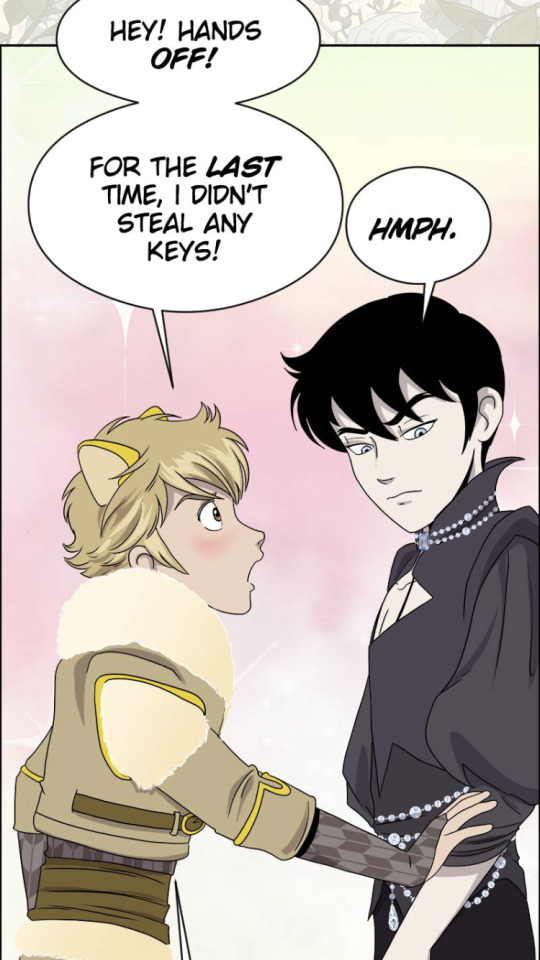


#cinderella boy#cinderella boy analysis#cinderella boy webtoon#webtoon#webtoon originals#webtoon cinderella boy#chase hollow like and follow#chase hollow#deacon hollow#cinderella boy buddy#stargoth
325 notes
·
View notes
Text
Writing Research Notes: Horses
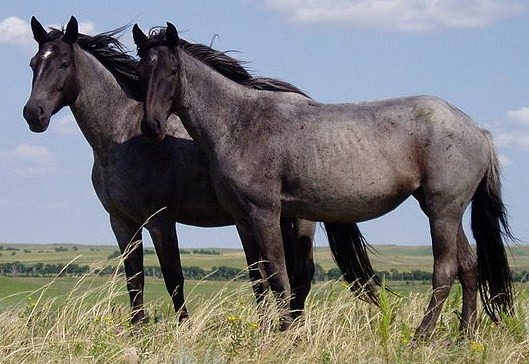
I have complained before about fantasy writers (and others) using horses without really knowing anything about them, so I'd like to share some basic Horse Facts. These aren't things about horse physiology, because you probably don't need that for your specific story, but things that you can add into your story for verisimilitude.
I'm not a horse trainer or Horse Expert, just someone who loves horses and rides on a regular basis. This is a casual guide to help give you some inspiration (and know what to look up for more information.)
So, what will we discuss in this embarrassingly long post? This.
General horse knowledge
Approaching and sanitizing Horse
Tack, the Horse Accessory Kit
Putting the tack on Horse
Getting on Horse (second best part!)
Riding Horse (best part!)
Being nice to Horse (most important!!)
General Horse Knowledge
Horses are generally classified as hotblood, warmblood or coldblood.
Of course, being mammals, they are all actually warm-blooded. This is more about temperament and size.
Hotblooded horses are lighter, bred for speed and maneuverability. Thoroughbreds and Arabian horses are hotbloods. They're known for being a bit more temperamental, but they are also very fast and responsive.
Coldblood horses are larger, stockier, and more even-tempered. This includes draft horses like Percherons, Gypsy Vanners, and Clydesdales.
Note that a big horse doesn't necessarily mean they're a good war horse, because war horses need to be fast and light. Draft horses are meant to pull, not carry. In a military series, you can use them as cannon horses or cart horses.
Warmblood are crossbreeds of hotblood and coldblood, giving them a good temperament but also relatively good speed. They're often used for hunting, dressage, and showjumping: disciplines that require both maneuverability and a strong working relationship between horse and rider. Quarter Horses, Tennessee Walking Horses, and Irish Sport Horses are warmbloods.
Horses are herd animals and need friends.
Having a singular horse all by themselves is going to cause them distress and lead to mental problems. This is why people who only own one horse often stable them so that they can get social stimulation and professional care.
Like humans, horses have buddies, acquaintances, and enemies.
There is often a pecking order in a herd, with a leader and followers. Horses may make friends, break up with them, reconcile, etc, just like people do.
And horses, of course, have people they like more than others. To get a horse to like you, be gentle and mindful of their boundaries, pay attention to their feelings, groom them, and speak in a soft friendly voice.
Horses aren't mindless animals: they think, feel, and strategize.
They're actually very sensitive and empathetic animals who can get jealous, have their feelings hurt, or need a little bit of TLC on a hard day. And yes, they can scheme.
Similar to dogs, horses are a bit like toddlers: they need firm but compassionate guidance.
This is why you need to think both for yourself and the horse when riding, keeping your mind clear and focused on your goals. Horses can notice when you're not paying attention and they will do their own thing.
Therapy horses are chosen for both their good nature and their sensitivity to human emotions. They will notice when the rider is getting upset or losing focus, and they will stop what they are doing until the rider is back in the right mindset.
They should get as much outside time as possible.
Horses will come to accept and even like their stalls because it's a safe, quiet space for them, but they should be allowed free time outside as much as possible.
It's important to make sure that their pasture is clean, free of dangerous plants or pesticides, and safe from tripping hazards (horse legs are very delicate).
Make sure they are not gorging themselves on grass, though, as this can cause colic. Horses cannot throw up: they've got a one-way digestive system. Intestinal blockages are a medical emergency.
Horses do like working with nice humans.
This isn't cope, I promise. Just like dogs, they have been bred over thousands of years to look to humans for guidance and to see us as caretakers.
Horses who are treated well like having a job, just like dogs who are treated well will like training sessions. Jobs offer them mental stimulation, offer them praise and rewards, and keep them busy so they're not bored.
You can see this in happy horses. The therapy horse I use, Truly, used to be a jumper and hunter before she came to the therapeutic stable, and she gets really excited if she sees vaults because she loves doing that! She gears up for the trot; you can feel it in her stride. She's ready and wants to go.
But, this implies that you're treating your horses well, praising them regularly, and bonding with them outside of sessions.
Horses that are being mistreated will balk at work because they associate it with pain and fear. Horses that are treated well will happily come out of their stall, ears forward and eyes bright, because they associate work with fun and stimulation.
Approaching and Sanitizing Horse
Horses have a blind spot in front of them and directly behind them.
Unlike humans, their eyes are on the sides of their head because they are prey animals. This means approaching a horse directly from the front or directly behind them may make them spook - and, if you are by their butt, kick you.
Generally, younger riders are taught never to pass behind a horse for safety reasons, so you go around them in a wide circle or duck under their neck. You can also walk behind them if you are out of kicking distance (about 3-4 feet) or right up against them so they can't get their leg up to kick you.
When tacking up or grooming, you should keep a hand on the horse as you move.
This lets the horse know where you are if you are in their blind spot and is especially important if you are around their butt so they don't spook and wonder where you went.
With grooming, you go with the curry comb and hold the bristle brush where you intend to go next so they know what to expect.
Grooming improves circulation and is a good bonding activity.
You use a curry comb, which is a rubber comb with little nubs, and then a brush. The curry comb is moved around in a circular motion to lift dirt and shedding hair, then the brush is angled with the grain of the hair to sweep it away.
Don't use a curry comb on a horse's face, legs, or stomach, which are sensitive areas. If you do want to use a curry comb in these areas because they are super dirty, be VERY gentle and light.
Horses generally like to be groomed because they do this to each other in the wild. It's a good way to make a horse like you.
Picking a horse's hooves, and having regular farrier checks, are crucial for their health.
Like human fingernails, horse hooves grow continuously; they're made from the same material as our hair and nails, keratin. They have a V-shaped "frog" in the middle of the underside of their hoof that is sensitive, but the rest of it isn't very sensitive unless you, like, stab it.
Farriers will file down a horse's feet so they are even, and they will also apply horseshoes if necessary (not all horses wear shoes). You can't just put any old horseshoe on a horse: it has to be fitted to their particular foot. This is a specialized job that not everyone can do, so if your character is not a farrier, they're not going to apply horseshoes themselves.
Cleaning a horse's hoof involves a hoof pick.
When picking a horse's hooves, you take an angled piece of metal called a hoof pick and dig out any dirt or manure or whatever has gotten stuck around the frog, then brush it out with a small brush. If they wear horseshoes, you also need to make sure you get the crevices underneath the shoe.
Generally, we pick feet both before and after riding.
Horses need to be trained to give you their leg. This usually means leaning your body weight into their shoulder, sliding your hand down their leg, and squeezing at the soft indent right above the hoof. You might also need to say "pick it up" or whatever command they've been taught to use.
It's a little scary for a horse to be off-balance like that; how would you feel if someone made you stand on one leg while they clipped your toenails? Be mindful that they may get nervous or put their foot down before you're ready. If this happens, just try again until their feet are clean.
Keep your feet and hands out of the way of the horse's hoof!
Pay attention to where your feet are in conjunction with the horse's hoof so they don't slam their hoof down on your toes. Horses may not even realize they stepped on you because they don't have a lot of sensitivity down there.
Never curl your fingers around the horse's hoof; that's a surefire way to break your hand. Hold it like you're cradling a baby's head.
Do not wear steel-toed shoes in a stable.
It's a common misconception that you should wear work boots or steel-toed shoes; after all, big horse very strong very heavy smash on foot!
Yeah, but a furry hydraulic press will crunch that steel right into your damn foot, and then you have guillotined all your toes.
Wear special riding boots instead. These don't have the ridges that hiking shoes or tennis shoes have, so they won't get caught on the stirrup. Cheap short ones cost like $40 and will last you a few good years. No need to go whole-hog on the long dressage boots if you're a casual rider.
Horses are usually taught to be groomed, tacked up, and mounted from one side.
This may not apply to therapy horses, who are trained to accept whatever way is easiest for the rider.
For dressage horses, they are taught to be groomed, tacked up, and mounted from the left. You should stand on the horse's left side when leading them. You'll dismount from the right.
Tack: The Stuff That Goes on Horse
No matter your discipline, you'll have these general things:
Halter. This is for leading the horse around before you tack them up. Generally, you will tie up the horse to cross-ties while you're grooming and tacking them. It is removed right before you put on the bridle.
Saddle blanket/pad. Western uses saddle blankets, but with English, you'll use a pad. Sometimes, with older horses or those that need a bit more comfort, you will have a blanket and a pad. This goes on before the saddle.
Saddle. Western saddles are very big, made for riding long distances. They are made mostly of leather, including the stirrups, which are attached directly to the saddle. English saddles are much smaller and lighter, and they have more removable parts. I won't get into all the specifics of them because it's probably irrelevant to your story.
There are also more specialized saddles, like jockey saddles.
Girth. Old-school Western saddles have cinches that you tie with the same knot you use for a necktie, but modern ones that detachable girths just like English saddles. They have buckles on both sides. One side will have leather straps; this is the one you put on first, from the left. The other side has elastic so it's a bit stretchier. This goes on the right side.
Bridle. How you control horse. Goes over the face and you hold onto the reins. This is put on last, right after you remove the halter. Put the reins over the horse's neck so you have something to hold onto after you remove the halter!
Bit. This is a metal bar that goes in the horse's mouth, over the tongue. Snaffle bits are the most common; they are made of two parts that meet in the middle. They aren't as uncomfortable for horses as other types. Some people are moving away from bits entirely and using bitless bridles.
Putting Tack on Horse
English stirrups are "run up" when tacking up and leading a horse.
The metal stirrups can bang against things and hurt the horse if they are not pulled up against the saddle by running them up the leather strap they hung from. You'll then tuck the excess strap into the stirrup to hold them in place.
Stirrups can be adjusted with a buckle hidden under the saddle seat. You'll run them up, pull the buckle down to a comfortable height, and then adjust as necessary. Then pull the stirrup down to the bottom, put your hand against the seat, and lift the stirrup up to run along your arm. It should brush against your armpit for most people.
Most dressage stirrups have numbered holes so you can remember what your height is.
Western saddles have leather stirrups that may or may not be detachable or adjustable.
Never tie a horse's reins to anything.
Don't listen to old Western movies that show this. If the horse spooks and they are tied up, they could rip the bit out of their mouth and really hurt themselves.
Horses have bars in their mouth - a blank space with no teeth. This is where the bit sits.
To get a horse to accept a bit, you can stick your thumb into this blank spot to make them open their mouth, just as you can do with dogs.
You then pull the bit up over their front teeth and settle it in there so it's comfortable.
There should be a small bit of pull you can see from the wrinkles around their mouth, but it shouldn't be squeezing them to death. Gentle pressure, happy horse.
Tighten the girth (the strap around their tummy) right before you get on.
Horses like to "bloat," meaning they suck in a bunch of air when you're putting the girth on, then relax so that the girth is loose. You don't want this, because then you can slide off. So put it on loosely at first, then put it up a few slots once you're about to get on.
Don't rachet it up to the highest possible setting you can reach, and don't yank on it, because this hurts the horse. Gently pull it up until it's tight enough to hold on, but not so much that it becomes a corset. You should be able to slide three fingers between the girth and the horse's stomach.
Getting On Horse
Lead the horse to where you want to go by bringing the reins over their head and holding them under the chin.
Do not use a death grip! You don't need to. Loose and happy. Keep the excess in your other hand so it's not a tripping hazard.
Then, of course, put the reins back over their head when you're ready to get on.
Mounting blocks are convenient and safer for the horse.
These are kind of like step stools, and they get you closer to the horse's back. Mounting from the ground puts a lot of pressure on the horse's back and should only be used sparingly.
The procedure is like so for English:
Gather the reins in your left hand, which should be placed near the front of the saddle.
Put your right hand near the back of the saddle for balance.
Put your left foot in the stirrup.
Swing your right leg over.
Settle your right foot in the stirrup.
Don't jump up; you might fall the hell over, lmao. Gentle easy swing.
The stirrup sits on the ball of your feet, with the heel pointing down.
This is true for both Western and dressage. You want it on the balls of your feet so you have leverage and can pivot your ankle to lightly tap the horse on the side, and you want your heel down to help maintain your balance.
A lot of riding boots, including cowboy boots, will have stitching that runs across the top of the foot. You can align this with the stirrup so you know that you don't have your foot too far back in the stirrup.
Your leg is slightly bent when in the saddle.
You do not have your legs straight out, because then you don't have leverage and can't maintain balance.
My instructor says it should feel like you're kneeling, and then when you post (rise out of the saddle during the trot or canter), you should feel like you're coming out of a squat. You're not springing all the way out of the saddle and standing up, because then you will fall over.
Your leg should stay as still as possible, with your heels pointing down to the ground. You shouldn't move them up or forward when you're trotting, a common beginner mistake.
When training in a ring, you don't have a right leg and left leg: you have an "outside" leg and "inside" leg.
Outside leg is the one closest to the wall (or fence), and inside leg is the leg closest to the middle of the ring. This keeps you from getting confused when you change directions.
Horses also have an outside leg and inside leg that you use to determine when to post or perform other maneuvers.
Horses need to be trained to go both clockwise and counterclockwise.
This helps them maintain balanced muscle tone on both sides of the body; otherwise, it's like doing leg exercises with only one leg. When getting a lesson, your instructor will ask you to change directions once you've done a certain exercise so that you can try it the other way, too.
Actually Riding Horse
You shouldn't yank on the reins like you're in a tug-of-war.
This can really hurt the horse and, paradoxically, make them more disobedient. It's like someone put their fingers in your mouth and then stretched your lips as far back as possible.
Keep your body loose.
Your horse is listening to your body language and will feel when you're tense. Every little movement means something to the horse. If you're tight, they think they should be nervous too.
Stay calm, upright, and loose. Legs slightly bent, elbows flexible, hands in line with the sides of the horse's neck and a bit above the front of the saddle.
Squeezing or tapping the horse is called impulsion.
It should be used lightly and with just enough pressure to get their attention. Don't kick the horse with all your might. The more movement you need from the horse, the more intense your impulsion will be.
Don't squeeze with your knees.
Pressure on the horse comes from the thighs and calves, not the knees. Your knees are there to bend.
Yes, your inner thighs will be super duper sore when you're done. It gets better though, prommie.
In dressage, you post at the trot in rhythm with the horse.
This reduces pressure on their back so you're not banging on their spine with each hootbeat. You post when their outside shoulder comes forward and lightly land back in the saddle when their inside shoulder rises: not sitting all the way down, just crouching a bit lower.
When you want the horse to walk again, you will sit down and pull (gently!!) back on the reins. The added pressure makes them not want to trot anymore because it would hurt them when you bump around on their back.
Being Nice to Horse (so Horse Is Nice to You)
Respect a horse's personal space and power.
They are big strong animals that can break your spine if they buck you, or crush your foot, or give you brain damage if they kick you in the head. Healthy respect (not fear) is crucial.
If a horse is pissed off, leave them alone. If they're scared, treat them kindly and speak soothingly. If they're not doing what you want, find a way to redirect them instead of screaming at them and making them more anxious.
And remember that they are prey animals despite their size and power! They may get nervous about things that you wouldn't even consider. Truly, the horse I ride on the regular, gets freaked out by jackets hanging over fence posts and barking dogs.
That's okay and natural; I just have to reassure her that she's going to be alright. You are the leader and caretaker of the horse, making them feel confident.
Training tools like whips, crops, or spurs should be used sparingly.
Any trainer who tells a beginner to use spurs as soon as possible is an asshole who doesn't actually know how to train horses. They don't know how to teach riders to control their body pressure, so they go right to the aversives.
I left a stable because the trainer demanded I buy spurs after like two lessons; my current stable doesn't use these at all, ever.
You should be able to control the horse with your hands and feet without these tools before adding them, and they should always be used as gently as possible: a slight tap with the spurs or crop, not beating the horse with a crop or digging your spurs into their sides. Horses are very sensitive animals and will respond well to a light kick with your heels if they are properly trained.
I've developed such a good rapport with the therapy horse I use (and she's such a good girl) that she can tell when I want to her trot. I start working her up to her "party walk" as my instructor calls it, and then click my tongue, and she's off. No kicking necessary.
Reward, Don't Punish
Same as when training dogs. Don't yell at them and say "no!! bad horse!!" Instead, offer a small correction, like checking the reins, or redirect them.
Do not hit or kick horses when they don't do what you want. They are trained that tap means go; you're going to make them gallop instead of stop.
Give them a pat on the neck and say "good horse!" when they do a good job. You can also talk to the horse while you're grooming and riding, offering them compliments and assurance.
Again, horses look to riders as leaders. They want to know the're performing correctly; if you've built up a good relationship, they want to make you happy and perform well.
Most of the time, horses are not trying to make you mad. You're just miscommunicating with them and need to figure out how to make your commands clearer.
Abusive training tactics are counterintuitive in the long run.
This makes for a nervous, flighty, disobedient, and anxious horse who may become dangerous. They're 1,200 pound animals, and if they don't like what you're doing, they will kick, buck, or bite.
Kicking, hitting, excessive use of spurs or crops, and screaming at horses doesn't make your horse respect you: it makes them fear you. You want your horse to be excited to work with you, to look forward to your training sessions, and to have fun.
I've created a masterlist of writing resources that you can peruse at your leisure, all for free.
The posts I write can sometimes take me hours - they're always intricate, always thoughtful. This one took me about three hours to complete.
I do this as a labor of love for the writing community, sharing what I have learned from almost 15 years of creative writing.
However, if you'd like to support me, maybe you'll consider buying my book for $1.99?
9 Years Yearning is a gay coming-of-age romance set in a fantasy world. It follows Uileac Korviridi, a young soldier training at the War Academy. His primary motivations are honoring the memory of his late parents, protecting his little sister Cerie, and becoming a top-notch soldier.
However, there's a problem: Orrinir Relickim, a rough and tough fellow pupil who just can't seem to leave Uileac alone.
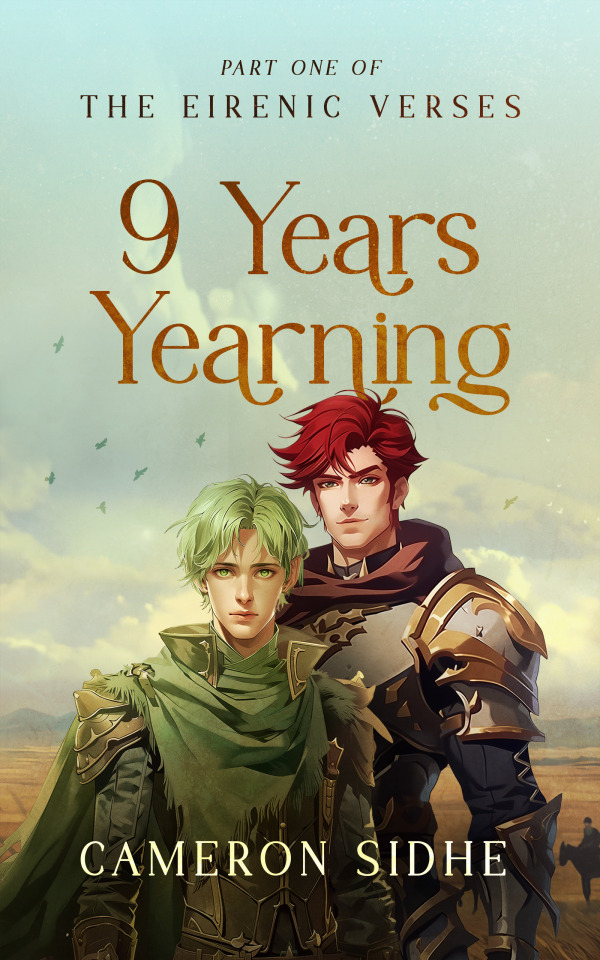
The book features poetry, descriptions of a beautiful country inspired by Mongolia, and a whole lot of tsundere vibes.
Oh, and horse!!! Horse love!! SO MUCH HORSE LOVE.
You can also check it out on Goodreads for a list of expanded distribution.
If you do purchase my book, don't forget to leave a review!
Reviews are vital for visibility on Amazon and help to support indie authors like me. Whenever you love a book, be sure to let the author know! It's much appreciated.
#horses#equestrian#fantasy writing#creative writing#how to write#writing research#writing resource#writing reference#writing advice#writing stuff#on writing#writing things#writers on writing#writing horses
109 notes
·
View notes
Note
Horses aren't able to vomit, do you think centaurs suffer the same issue?
I have figured their digestive system as a two part system with the human stomach as the first stage and the horse stomach as the second, and looking up the ACTUAL reason horses can't throw up (intense esophageal muscles) I think the answer would be.. kind of? I think they would be able to throw up whatever is in their first stomach like any human, but if it gets to the second stomach it would get.. more complicated.
Like with medical care and certain drugs they would be able to relax the lower stomach sphincters enough to get stuff up but that would SUCK A TON for so many reasons and be rough on the human stomach as it gets hydroblasted by the mass of a horse stomach, but also probably wouldn't be as effective since I think horse's stomach muscles aren't as strong or in the correct orientation to expel contents like humans can (We are the upchucking kings)
So in short, yes - but anything beyond the smaller human stomach is TOO BE AVOIDED.
#asked and answered#centaurs#emetophobia#vomit mention#vomiting#for those who don't want to hear about#throwing up
115 notes
·
View notes
Note
Ms Toskarin, if a centaur got pregnant, do you think the fetus would be in the human half or the horse half?
alright fine I'll answer this.
I have to open this by saying I don't like centaurs. they always reminded me of centipedes. there are so many near and dear people in my life who love centaurs very much, and I've been working so hard on getting over my morbid phobia of them, but I still find them disturbing in a similar way to... I already said the centipede thing.
this is going to be an answer that betrays how deeply scary I find the anatomy of a centaur. the thought of touching a centaur's back and feeling how its spine bends makes me shiver like nails on a chalkboard. whenever centaur anatomy comes up, I can't help but imagine being a very distressed surgeon trying to work on a centaur patient who just. won't. stop. bleeding.
they're fine when I don't have to think about their physicality, though, so I kind of hate you for asking me this.
body horror warning implicit. this isn't a fetish thing, but it's going to land on some people's fetishes anyway, so consider that the second warning
let's get this out of the way: I think that a centaur's internal structure isn't just chimeric or anything. that's fine when you're going for fantasy, but there's a good reason fantasy stories rarely contain centaur dissections: a centaur wouldn't look good inside if you invited the audience to cut loose their suspension of disbelief like the sword of damocles directly on top of their internal organs. no good at all.
I'd say the organs are closer to a horse's than a humans, and they extend up seamlessly through the human body. a centaur has two hearts, though. this just makes sense to me. a centaur might also have a strange digestive system, but they'd be more of a ruminant, by my reckoning. they'd have teeth like a ruminant to account for this. do you think they'd have a diastema like a ruminant, too? oh, let's not get ahead of ourselves, actually. I'm wandering away from the question you asked
the human half would not carry a child. human pregnancies are already bad enough for our spine as it is, but can you imagine how much worse it would if a human's hips were forced back such that the weight wouldn't be distributed onto them? and then you have the matter of how disturbingly far the newborn would have to travel before being born. through all of those fucking organs? eugh.
no, it's gotta be the horse half. there's no other way.
199 notes
·
View notes
Note
There’s a note from a turian somewhere on Elaaden written by a turian saying the human he’s with was gonna “butter up” the other human and the turian was just confused by what dairy products had to do with this new girl they were letting in the group and it got me thinking omg we have so many metaphors and phrases and and figures of speech and idioms and slang terms. Lorik Qui’in loved human phrases but we only hear a few from him.
“Hold your horses!” What horses? I don’t have horses? What even is a horse?
“Oh im just a little under the weather today.” We’re on a ship, what are you talking about?
God(s)/spirits/enkindlers help the alien who hears the phrase “don’t throw the baby out with the bathwater.”
And then whatever new age slang the young humans create that make everyone wonder if their translators are broken
Yes! I especially love the detail in ME1 of turians obsessing over human idoms. In multiple scenes, you talk with a turian who quotes a figure of speech he's been rehearsing for days and waiting for the right opportunity to unleash it.
Even the turian councillor does it! How he looks so proud after telling the idom, following it by "as you humans say"
Pop culture and slang change drastically throughout the years. Sometimes, it only takes a couple months for a new phrase to spread like wildfire. Weirdly, the turians seem to be as equally confused by it as they are intrigued and want to be "in with the joke" and all.
"Cunt" Yeah makes sense for an insult, we prefer quad but uh sure.
"Cunty" What do you mean that's a compliment?? Wasn't it just an insult a second ago, how does making it an adjective change the meaning—
"Break a leg!" No! what no. why would I? It's just a job interview. Hopefully, I won't break any legs, be it mine or others.
"Cool as a cucumber" What the fuck are cucumbers.
"Don't cry over spilt milk" ???okay. I wasn't planning to. that will just get sticky, mop it up.
"Hit two birds with one stone." Why do you want me to go throw rocks at birds exactly?
"Rain cats and dogs." You're just making things up because how is that supposed to translate into bad weather? Why the vivid image?
"That's the last straw." ...okay? Then get more straws. I can run to the store and grab a bunch for you. A whole 50 pack goes for 5 credits these days.
"Butterflies in my stomach." See a doctor immediately, please! This isn't normal. Or never mind, your freaky digestive system could probably handle them.
"Fish out of water." Well, put it back.
"Get something off your chest." I...uh..I'm flattered human, but I'm not stripping my armour off in the middle of the street. We should get to know each other better first.
"Barking up the wrong tree." Humans...bark at trees? That's informative. Is it a bonding activity? Are you inviting me to go bark at trees?
"Not my cup of tea." Well, yeah, I'm not a cup of tea, so about this date you asked me on, do any trees work, or are there specific bark only ones.
"Cold feet." Now that you mention it, I have been eyeing this armour with internal heating for a while.
"Call it a day." Yeah. that's what it's called. That's the word we use for a day. What else would you call it?
"Wrap your head around it." That is physically impossible.
28 notes
·
View notes
Text
So you want to write about horses.
(Part 3! Enjoy this post? Want to know more? Check out So You Want To Write About Horses Part 1 and So You Want To Write About Horses: Medieval Edition)
Maybe your character is a jockey, or a rancher, or a stablehand, or the ever popular cowboy in the wild west. Maybe they have a whole team and an Olympic dream. But what do people even do with horses? I can help.
First, some vital terms
The equipment that a horse wears is referred to as Tack. Tack can be minimal or incredibly complex. The part that goes on the horse's head when riding is the bridle, and the part that goes on the back for the person to sit on is the saddle.
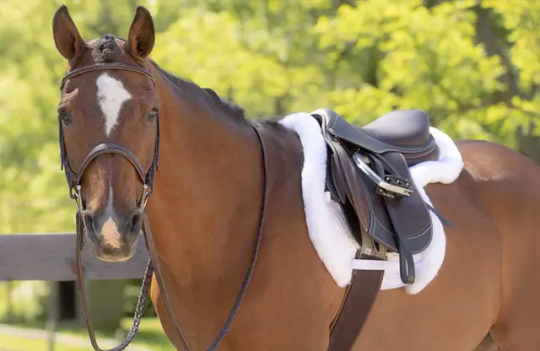
^ Got that? Good, there will be a test at the end.
Now, What do people even do with horses?
To know the jobs around horses, you should know that the equestrian world is divided into very distinct and separate realms, and the further you delve into these realms, the more specific and specialized the horses, equipment, and terms become. Broadly, there is "pleasure" horses and "working" horses. Working horses are relied upon for physical labor to support their humans. Pleasure horses fall into more of a hobby for their humans.
There is also the Western riding style and the English riding style. The Western style descends from the Spanish saddle, and is used throughout the world, but most commonly in the Americas, where it is closely tied to herding cattle. The English style is a bit harder to clearly pin down the original influences, but has history in military uses throughout the European continent, and currently exists internationally. The English style is the style used at the Olympic games and in jumping competitions, whereas Western is not.
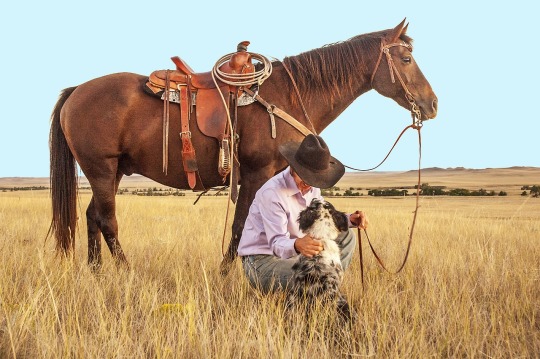
^ this is an example of a Western Style working horse. Western describes the style of equipment as well as the riding style. This horse is dressed for herding cattle, with a large comfortable saddle and simple rope bridle.
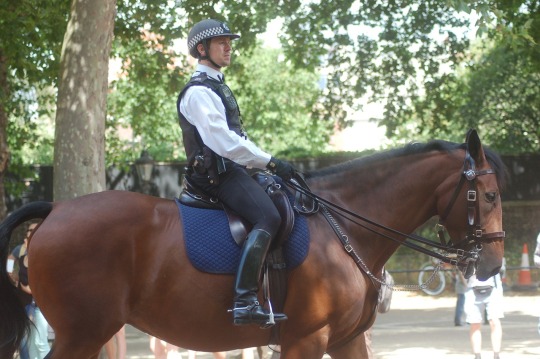
^ This is also a working horse, this time in the English riding style. Notice the saddle is much smaller, without a large 'horn' at the front of the saddle, and the bridle on the horse's head is much more complex. This horse is a Police horse.
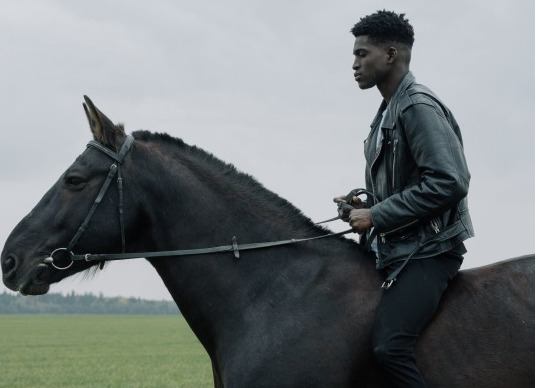
^ and there are many combinations, variations, or lack ofs that exist. Some people have trained their horses to not need any tack, and need only the tiniest movements of their rider's body. Don't ask me how, I am not one of them.
Finally, Professions involving horses.
For ease of understanding, I will break this into segments that involve all horses, English horses, Western horses, and then the even more specific horses like racehorses, ect.
This edition will deal with professions involving All Horses.
Equine Veterinarians
Veterinarians that work with horses in rural areas are usually more generally large animal veterinarians, while equine vets, often attached to an equine hospital or clinic, have specific and in-depth knowledge of equine medicine, rather than equine and bovine medicine. Both large animal vets and equine vets administer vaccines, diagnostic tests, and certificates of health, as well as diagnosing and prescribing treatments of injuries and sicknesses. Vets also aid in breeding horses, caring for pregnant mares, birthing foals, and handling semen collection or injection for artificial insemination.
One of the most common reasons for a vet call is for the treatment of colic, any horse owner's nightmare. Horses have a massive system of intestines, and any change to a horse's diet, stress, or exercise, as well as many other causes, can lead to a backup of food or feces in the digestive system. Minor cases can resolve with pain treatment, but in severe cases surgery is required, and horses can die very quickly from what is essentially an extremely dangerous stomach ache. It is one of the most common causes of death for horses.
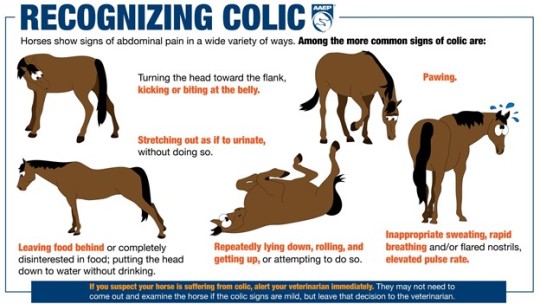
^ In very severe cases, parts of the intestine tie themselves into knots, lose blood flow, and die within the horse. I know many horses that have died from colic, and some that have survived.
Farriers
Farriers are pedicure specialists for horses. The hoof of a horse is simply a very large and thick fingernail, and a farrier is an expert in trimming, shaping, and even repairing that massive fingernail, as well as tacking on metal shoes to the bottom of a horse's foot. Farriers are also sometimes blacksmiths, and will create their own shoes, while others use premade shoes and nails.

^ (1)A farrier tacking on a shoe to a horse's hoof. (2) Shaping hooves with a rasp. Farrier treatments cause no pain to the horse when done correctly, and the specialized knowledge of which is why many farriers are expensive. Horses will need this redone every 4-8 weeks, depending on the horse and the environment. Even more than the vet, a good farrier is vital to the health and use of a horse, while a bad farrier can ruin a horse in less than the swing of a hammer.
(Side note: This is not a shoe, and no person putting that on a horse should be considered a farrier. I don't take many strong stances in informational posts, but this is one.)
Saddlers
These expert leather workers fit and shape the tack to the shape of the horse and the shape of the rider. Many serious riders have custom fitted tack, where a base saddle or bridle has been reworked after purchase to perfectly fit the riding pair in question. (I have one, it was expensive, and it continues to be worth it). Historically, tack has always been made with leather, which allows for stretch and molding of the tack, as well as decades of longevity, and still today, only the cheapest of tack is made with plastics. Saddlers often specialize in English or Western style tack, and many old brands are still known today for certain fits.
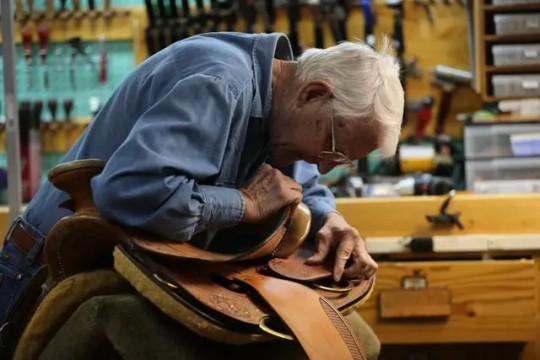
^ An expert Colorado saddler at work.
Trainers
Horses do not naturally trust humans, even after thousands of years of domestication, nor do they automatically know how to be ridden. Trainers are experts not only in their discipline, but also experts in horse behavior, communication (with humans and horses), basic first aid, common sense, and the rarest of all, the elusive 'horse sense'. Horse sense give a trainer the understanding of a horse's personality, and allows them to form a bond that not only teaches the horse to trust them, but to trust all humans. A trainer's job is to discover the horse's potential abilities, as well as the horse's fears, dislikes, and any pain or mis-training that could impede a horse's progress. Across the world, there are many style of training, many jobs that horses must be taught to preform, and a lot of misunderstandings. A good trainer can save the lives of horses and humans alike, a bad trainer can ruin both. The first steps of training a horse can be referred to as 'starting', 'breaking', 'training', 'backing', and many more.
Grooms
Grooms are the beauty professionals of the horse world, as well as the people getting everything done behind the scenes at high level barns or shows. In some places, grooms bring the horse in from the field or stall to be brushed, put the tack on the horse, warm the horse up, and then hand the horse over to the rider. In other places, grooms are a luxury as much as a butler for your horse. Grooms may also be responsible for managing the stables and tacking areas, keeping those areas clean through sweeping or removing mess, and potentially feeding, moving horses from pasture to stable, or whatever else needs to be done at a large stable. In other situations, the more grunt work will fall to part-time stablehands, while the grooms focus on working with the horses and riders.
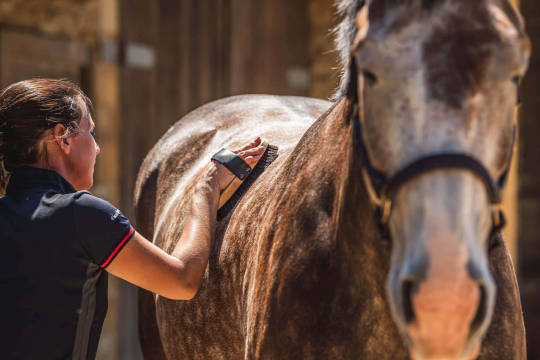
^ Racehorse Groom Stephanie Searle grooms a racehorse.
Floaters/Equine Dentists
Horses are unique animals, with unique digestive systems, as has already been discussed, and with unique teeth. Due to horses' diets involving primarily hays, grasses, or grains, the teeth of a horse receive a great deal of wear from the tough nature of these foods. The wear patterns are so well documented that they have for thousands of years been used to tell the age of a horse with a great deal of accuracy.

Floaters are equine teeth experts, and receive their name from the practice of 'floating', or grinding sharp areas of horses' teeth down to prevent these sharp points from slicing into the horse's cheeks or stopping a horse from properly chewing.
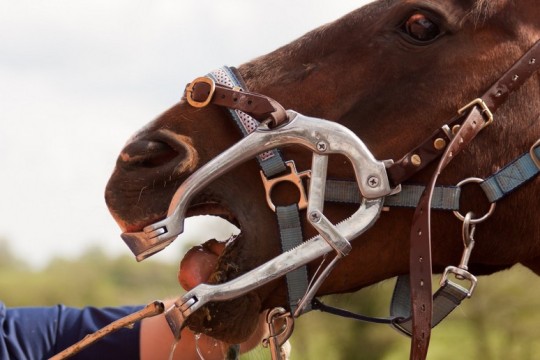
^ Floating a horse's teeth. Also not painful, but like many people, horses tend to prefer being sedated for the dentist.
Professional Transport
In the modern age, as well as to a certain extent, the past, horses are constantly being moved, shown, sold, and shipped. Professional horse transport exists in the form of semi-trucks, ships, and planes, as well as trains. The transport of horses, usually very expensive and valuable horses, requires a team of professionals including veterinarians to ensure the horses' safety in transition.
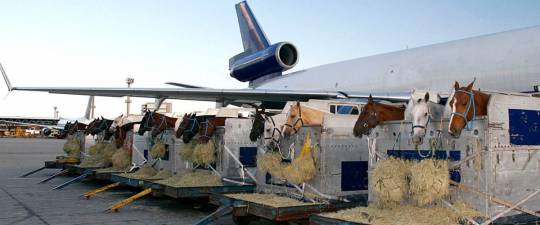
^ Horses ready to go on a plane. Personally, a terrifying sight.
Alternative Treatments
Just like human medicine, horse medicine has a proliferation of supplements, alternative treatments, folk magic, and home treatments. Professional equine nutritionists work with feed companies as well as feed supplement companies (think herbal food additives as well as fish oil, ect.) to create supplement brands that claim to calm or energize horses, ease pain, prevent colic, or treat any number of issues. Horses may receive any number of visits from such varied services as equine massage therapists, equine physical therapists, equine chiropractors, equine spirit mediums, animal communicators, and so on. The scientific basis for these professionals ranges from well supported to lacking support, but such services remain popular regardless.
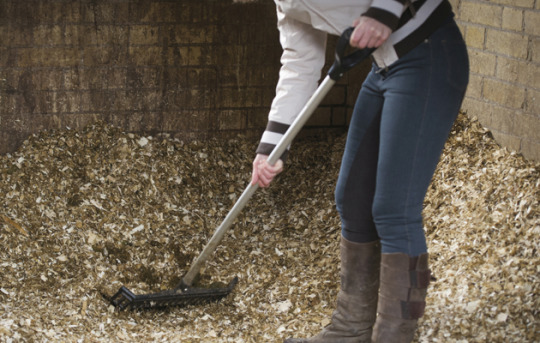
^ No matter what the profession with horses ends up being, just about everyone starts here: mucking out the stalls.
This post will end here, but keep an eye for the extended cut with the English and Western specific professions!
#writing horses#writing advice#how to write horses#basic horse writing advice#long post#writer advice#writeblr#writeblr community#writing tips#creative writing#writer stuff#basic horse things#so you want to write about horses#writers community#equine writing advice#writing equine professions#writing equestrians
51 notes
·
View notes
Text
"The studies are the first to experimentally test and prove hypotheses from the 1960s that equines make grazing land more suitable for bovines, a dynamic known as facilitation, Rubenstein said. Observations of zebras and wildebeests had suggested that the zebras’ ability to digest grass stems exposed the leafy grass wildebeests prefer.
Animals in the horse and cattle families both process food through fermentation as microbes in the digestive system break down vegetation. In horse-like animals, this process takes place in an organ located after the stomach that is similar to the human appendix (though humans are not fermenters). For bovines, on the other hand, fermentation happens in the rumen, an organ before the stomach that produces cud, which is regurgitated for the animal to further chew.
As a result of these digestive distinctions, Rubenstein said, equines can eat the rough low-quality grass that would linger and fester in a cow’s slower, more complex gut. The bovines in turn enjoy the lush, easily digestible grass underneath the stems.
Both Princeton studies showed that the presence of equines resulted in less dry-grass cover and a more nourishing diet for the cows. Although the study in Science matched cattle with other wildlife — including bovines such as buffalo — Odadi and his co-authors largely attributed the removal of the low-quality grass to zebras.
What was not expected was just how much the cattle can benefit, Rubenstein said.
'Scientists had this intuitively pleasing, circumstantial evidence that equines make the landscape more habitable to bovines, but the idea was never tested,' Rubenstein said. 'This was the first demonstration that the animals behave accordingly, but also that the performance of the cows as measured by growth is actually enhanced. Previous evidence of the effects we found on the health and development of cattle had been missing.'”
42 notes
·
View notes